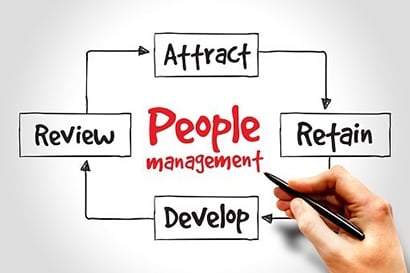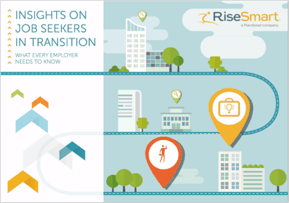How to Attract and Retain Top Talent

August 9, 2018 – When it comes to successful hiring and retention, pay rules, according to Adecco’s “2018 U.S. Workforce Report: Attracting Talent and Retaining Employees.” The report, which surveyed over 1,000 American workers from coast to coast, said that remuneration is easily the most important job factor.
Employees told Adecco that their top job factors were: salary/wages (42 percent), work-life balance (21 percent), health insurance (nine percent), skills training/career growth (nine percent), workplace culture (seven percent), co-worker relationships (six percent), 401(k)-(four percent) and rewards/recognition (two percent).
Amy Glaser, senior vice president at Adecco, recently told CNBC that companies are starting to pay more, albeit slowly. “It’s truly a candidate’s market, and companies are really struggling to find top talent. So we’re seeing them make concessions. Most of my discussions now [with employers] tend to be what is the return on investment they can expect when giving a raise to their employees.”
 Sr. Talent Acquisition Manager Wanted at Philadelphia Insurance Companies
Sr. Talent Acquisition Manager Wanted at Philadelphia Insurance Companies
Develop and implement strategic recruitment and employment programs, as well as identify best-in-class recruiting practices to drive aggressive growth strategy. Apply on Ezayo!
One objective way to measure return on investment is via retention—or, essentially, how loyal workers are to the business. “Fortunately, we’ve made this a science by helping you project how much pay raises will increase retention and reduce turnover costs,” said Adecco. “According to our in-depth data spanning 40-plus companies, there’s a strong correlation between wages and retention.”
What’s often the case, however, is that companies can only pay so much. They may want to pay more than competitively, in the vicinity of the 75th percentile, for example. But because of limited budgets and resources many can only pay semi-competitively, such as in the 50th percentile.
That begs the question: How do those companies increase employee retention without better pay?
Work-Life Balance
Work-life balance needs to be a reality, rather than just a buzz phrase, according to Adecco. In a job market with a 1:1 ratio between job openings and job seekers (compared to 6:1 in 2009), it’s difficult for businesses to find the talent they need. Companies in the same local market—and their direct competitors across the country—are recruiting from the same relatively limited talent pool.
 What Every Employer Needs to Know About Employees in Transition
What Every Employer Needs to Know About Employees in Transition
The people that leave your organization are as important as the ones coming in. And how you handle their transition can dramatically impact your reputation as an employer. Departing employees are your brand ambassadors – and they can affect every stage of your company’s talent lifecycle, from retention and productivity to recruiting and everything in between. But not every organization gets employee transition right.
Some neglect it entirely, while most – more than 60% according to the latest figures from contemporary career transition services specialist RiseSmart – fail to offer any transitioning services to professional, manager and entry-level employees. Why not turn that figure upside down and set up departing employees for success? Discover the tools your organization must provide to employees after a layoff. As people leave, there are just as many things to do as the day you welcomed them in. Here are some fresh ways to get started in a new report just released by RiseSmart. Get it Now!
“You should make it clear even before the interview stage that you offer true work-life balance,” the Adecco report said. “And you can’t merely say it; you must make it tangible. Whether it’s granting extended paid time off, offering work-from-home weekdays, preventing work-from-home weekends, be transparent across the hiring process, from job ads to offers.”
Among the top 20 companies that offer the best work-life balance are In-N-Out Burger, Intuit and Trader Joe’s. In-N-Out offers flexible scheduling for all employees. Intuit encourages employees to spend up to 10 percent of their work time on personal ideas they’re passionate about. And Trader Joe’s embraces the mantra “We don’t believe you have to compromise important priorities in your life to be in ours.”
Customize Career Paths
Today, career paths are loosely defined. They can exist as formal succession plans or less formal skills development training, said Adecco. Generally speaking, the Baby Boomer generation and Generation X prefer the former, and Millennials and Generation Z prefer the latter, but not always. What is certain, however, is that skills training/career growth is the third most important job factor to America’s workers.
“Career paths should be tailored to every individual—and they should have a major say,” the report said. “Once an employee has proven their value, it behooves managers to start career planning and discussing skills development. This can be at the six-month point or even the one-year point. Whenever it commences, it should be on your terms so that you can display your loyalty to your employees. You invest in them; they invest in you.”
Related: Retaining New Hires Now Seen As a Critical Issue
The report, as an example, pointed to a partnership that Adecco itself has with GE Aviation and the Community College of Vermont that fosters skills in a local workforce and provides new career opportunities for individuals. “Partnerships like this can help companies overcome a lack of human capital and/or available time and develop strong pipelines of talent that are more likely to reciprocate by sticking with your company,” Adecco said.
Innovate Workspaces
Adecco also suggested that employers boost retention by providing a positive culture. And while people are of course at the center of culture, it all starts with a great workspace.
 Mentorship Programs are Important to Retaining Top Talent
Mentorship Programs are Important to Retaining Top Talent
Few executives would deny the powerful role that mentorship plays in providing opportunities for personal and professional development. Indeed, most have experienced these benefits firsthand. Yet when it comes to understanding how mentoring operates – let alone how it could be harnessed to support.
In industrial and manufacturing and construction settings, workers have fought for better workspace conditions for years. “Safety is at the forefront of these settings, and while OSHA and state organizations have made—and continue to make—positive impacts, it’s up to you to provide the right environment and implement the proper training that is conducive to a safe work environment,” the report said. “While it may seem like safety training isn’t so innovative, it’s quite the contrary. For instance, Technip USA’s Riad Efendi recently developed an app that allows safety professionals to submit reports with their mobile devices, and In-Source Options’ Frank T.K. Tan recently invented a patented safety system for forklift drivers.”
Related: Failure to Develop, Engage and Retain Talent Is Growing
In professional settings, innovation is more about the balance between openness and closeness. “This allows workers to effectively collaborate and communicate when necessary and conveniently find quiet and solitude other times,” Adecco said. “Much of corporate America has done away with cubicle walls in favor of open floor plans, yet retain small, private offices, phone booth-style areas and even libraries.” This enables a mixture of introverts, extroverts and everyone in between to find spots that meet their needs. It also maximizes the potential for creativity.
In today’s tight labor market, one’s company pays above the 50th percentile at a minimum and above the 75th percentile ideally, said Adecco, compared to both direct business competitors and local businesses vying for the same talent. “However, if circumstances dictate average pay, all is not quite lost,” Adecco said. “By focusing on secondary and tertiary job factors such as work-life balance, career paths and workspaces, you can offset average pay and build the workforce you need—at least to an extent.”
Related: Top Hurdles for Finding and Retaining Top Talent
Contributed by Scott A. Scanlon, Editor-in-Chief; Dale M. Zupsansky, Managing Editor; Stephen Sawicki, Managing Editor; and Andrew W. Mitchell, Managing Editor – Hunt Scanlon Media











